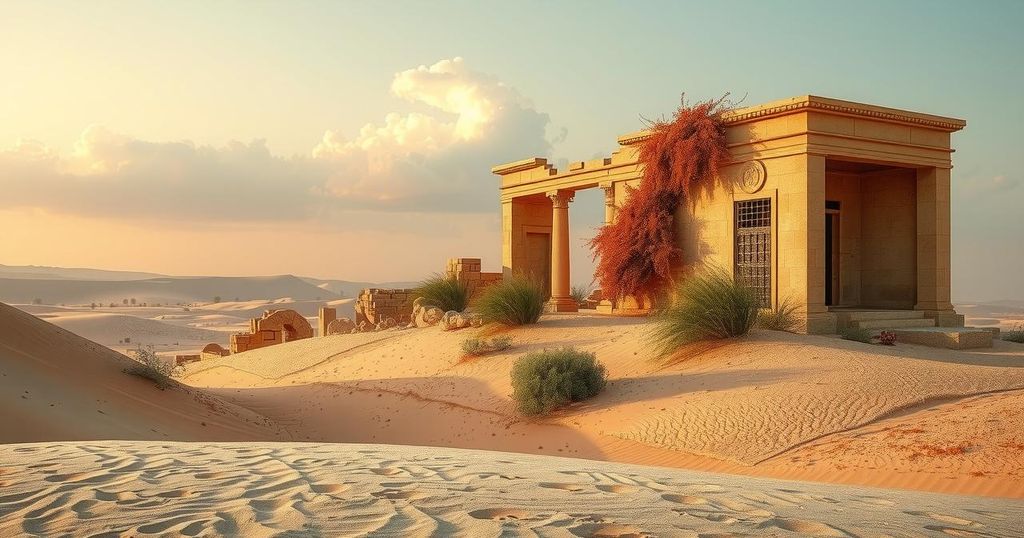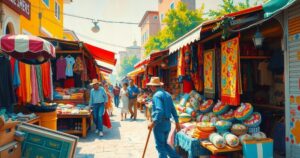Syrians Revisit Palmyra: A Return to Heritage Amidst Ongoing Challenges

Syrians are returning to the famous archaeological site of Palmyra, which had been heavily damaged by Daesh. Despite the scars of war, families are reconnecting with their heritage by picnicking and sharing memories. Illegal excavations remain a concern, as military activity continues in the area, impacting public access and safety. There is a renewed spirit among locals, although many still confront challenges in securing their homes and livelihoods.
In recent visits to the ancient ruins of Palmyra, a UNESCO World Heritage Site in Syria, locals have resumed their recreational activities amidst the historic remnants, marking a return to normalcy following years of conflict. The site, once ravaged by the Daesh terrorist group, has opened to the public again, allowing families to reconnect with their cultural heritage and memories of past visits.
After the destruction of significant structures by extremists, the ruins have remained a source of civic pride. Many formerly displaced Syrians, including Yasser Al Mahmoud and his family, have returned with a sense of joy, engaging in activities like picnicking and storytelling. Mahmoud expressed his desire to revive his jewelry stall, which prospered prior to the civil war in 2011.
Palmyra, also known as the “Pearl of the Desert,” showcases some of the Middle East’s most well-preserved classical monuments. However, following its capture by Daesh, who used the site for executions and systematically destroyed artifacts, the threat of further damage continues. Nazir Awad, the director of antiquities and museums, issued warnings about illegal excavations exploiting the site with heavy machinery, compromising archaeological integrity.
Despite the removal of Daesh, the area is still classified as a military zone due to the presence of Syrian government forces and foreign allies, who have established military bases in proximity to the ruins. The ongoing military activities pose challenges to civilian access and safety, complicating the resurgence of tourism which thrived before the civil unrest.
The situation remains complex for locals like Khaldun Al Rubaa, a former rebel fighter, who reflects on the transformation of Palmyra from a center of tourism to a military encampment. After years of displacement, he hopes to restore his life by reviving tourism-related activities in the area, citing the devastation wrought by various factions over the years, including foreign military involvement.
Finally, while some residents have begun returning to their homes, others, such as Khaled Al Sheleel, are still dealing with the aftermath of destruction and displacement. Despite the extensive ruins, there is a palpable sense of hope among returnees who cherish their cultural heritage, evidenced by emotional reunions with their historic landscape.
The article reflects on the return of Syrians to the ancient ruins of Palmyra following years of destruction and military conflict. Despite the ongoing risks posed by illegal excavations and military operations, the reopening of this historically significant site has reignited hopes of cultural restoration. Residents are gradually reclaiming their identities and livelihoods, fondly recalling their connections to these timeless relics, while highlighting the ongoing struggles many still face amid destruction.
Original Source: jordantimes.com




